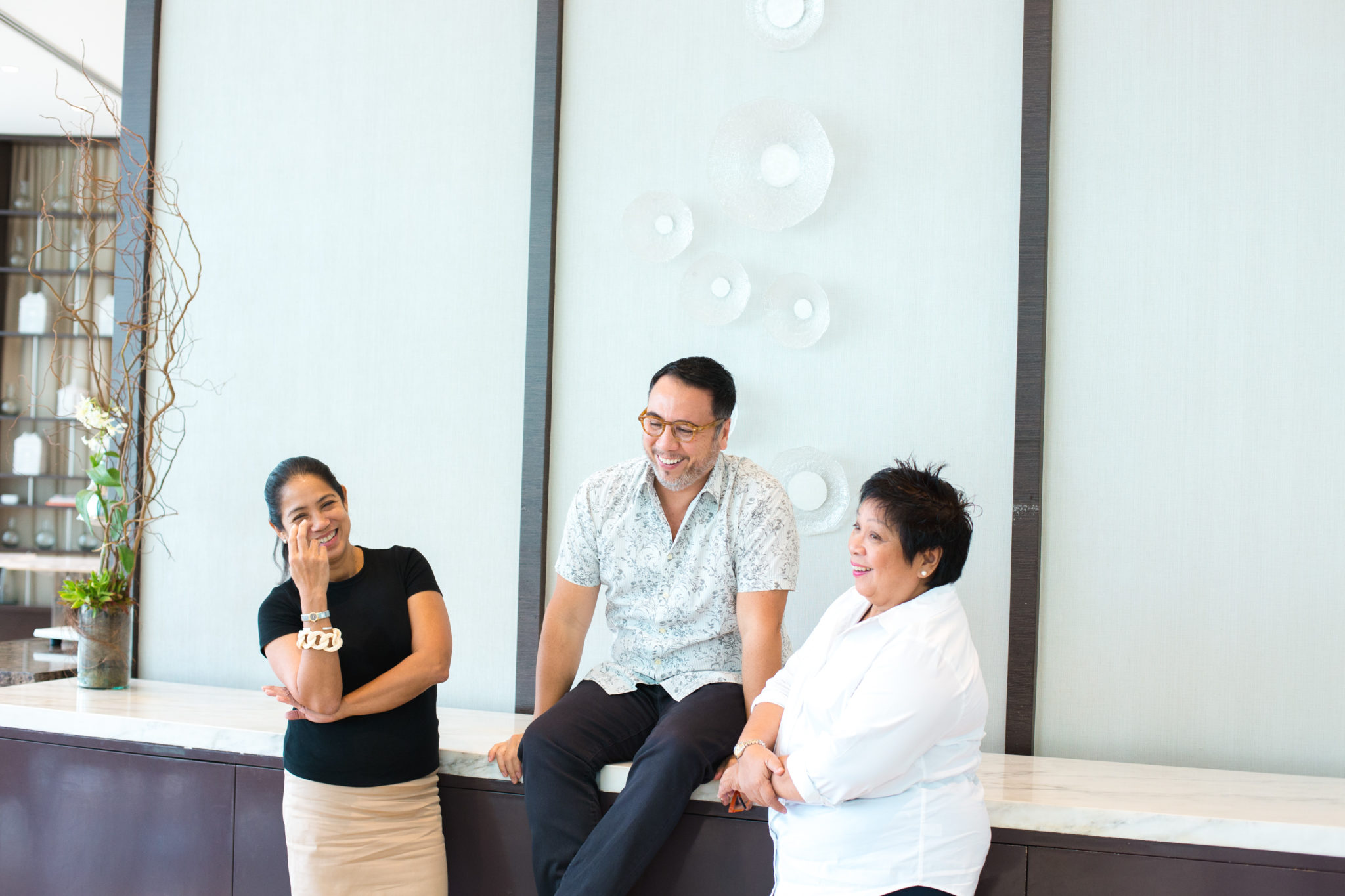Filipino food icons and chefs Myrna Segismundo, Margarita Forés, and Fernando Aracama are luminaries who have been shining brightly in the industry for decades. They all run successful restaurants, have multiple awards to their names, and are celebrated ambassadors of Filipino cuisine.
All three have been featured as speakers at the international gastronomy congress Madrid Fusion Manila. Back in the ’90s, the three worked together in one kitchen—at the Sign of the Anvil restaurant, the private dining facility of PCI Bank.
Individually, they have won multiple accolades. Collectively, they have good memories of working with each other earlier in their careers. The awards may be fleeting, but the friendship definitely is not.
Tell us how you started at Anvil.
Myrna Segismundo (MS): I started in 1984.
Margarita Forés (MF): It was a beautifully designed place, and they still have the original furniture.
Fernando Aracama (FA): The first time I was in Anvil was for my nephew’s baptism, which was around 1987. We just walked up and I thought, “What are we doing in a bank?” We were downstairs in the chapel and we walked upstairs. I remember just seeing that beautiful space, like what Gaita was saying. If you could embody class, that was it. And you wouldn’t think you would find that in a bank.
“The Sign of the Anvil was not on the radar. We weren’t even open to the public yet every year, they were already competing in Chefs on Parade, and that was a premier competition,” says Fernando Aracama.
MF: It was like the Four Seasons of New York but in Manila.
FA: It was a secret place.
MS: Let me tell you what got me there. I had just resigned from the Hilton at the time. I was bouncing around until a classmate called me and said she was leaving, and [asked] if I was interested in taking over. I said, “From a hotel to a cafeteria?” You know, I have never seen it before.
MF: It was not open to the public.
MS: I said, maybe no. Then she said, “Please, just let me get away with my boyfriend for a month, then you can give it to this other classmate of ours to take over.” And I didn’t leave until 17 years later. What got me when I entered the restaurant was, believe it or not, the Blanco prints.
We had one of only three complete sets. PCI Bank at the time really invested in good art. So the Anvil was a repository of all these works. The art collections were fantastic. As soon as the elevator doors opened when I went to see my classmate, I was smitten. Those were the glory days where all the fun began.
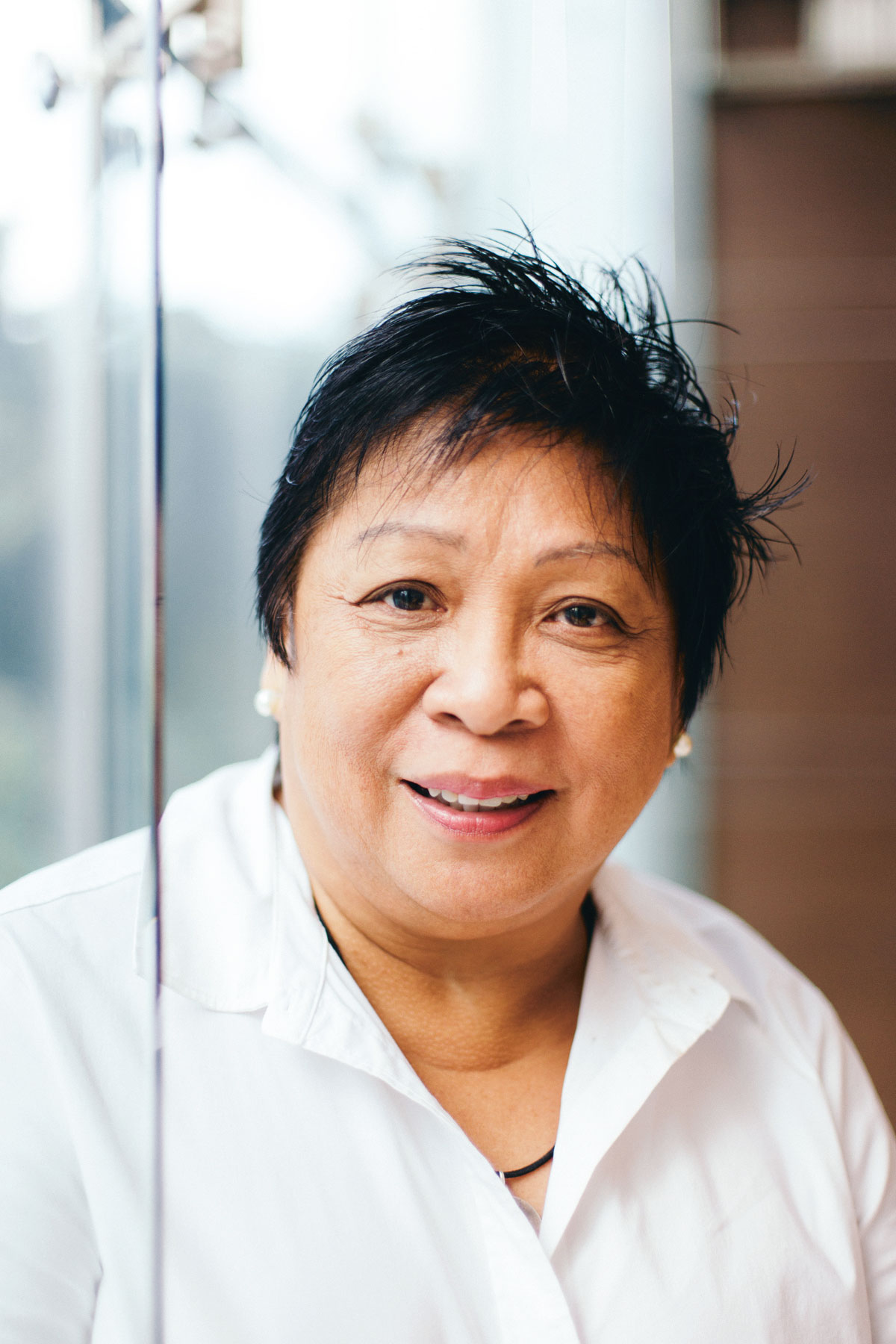
Did you have to give up other opportunities to join them?
MS: Yes, I was supposed to get sent on a scholarship by the Hilton people to New York for what they call the Career Development Institute. And then I was supposed to run the Windows on the World (the restaurant on the 107th floor of the World Trade Center). I had to turn my back on that, and the Anvil felt like a drop in standards compared to the Hilton, but it was not the way it turned out at all.
How was it different from your expectations?
MS: I thought it was a cafeteria, and then lo and behold, it had the highest standards. You had a free hand to teach the captive market the Ps and Qs of dining. Hardly a menu, right? Every quarter, we had food festivals. Everything I learned in the hotel industry, I translated into that small operation.
MF: But in private dining.
MS: It was a very unexpected experience. Corporate dining is a different animal altogether.
MF: Corporate dining is ruled by knowing everybody’s initials, how they take their coffee.
MS: You have to be a jack of all trades and master of many. It was like market basket every day. My former bosses never ordered from the menu. I had to think for them and I had to somehow feel what their mood was.
MF: You had to be ready, depending on what their mood was for that day.
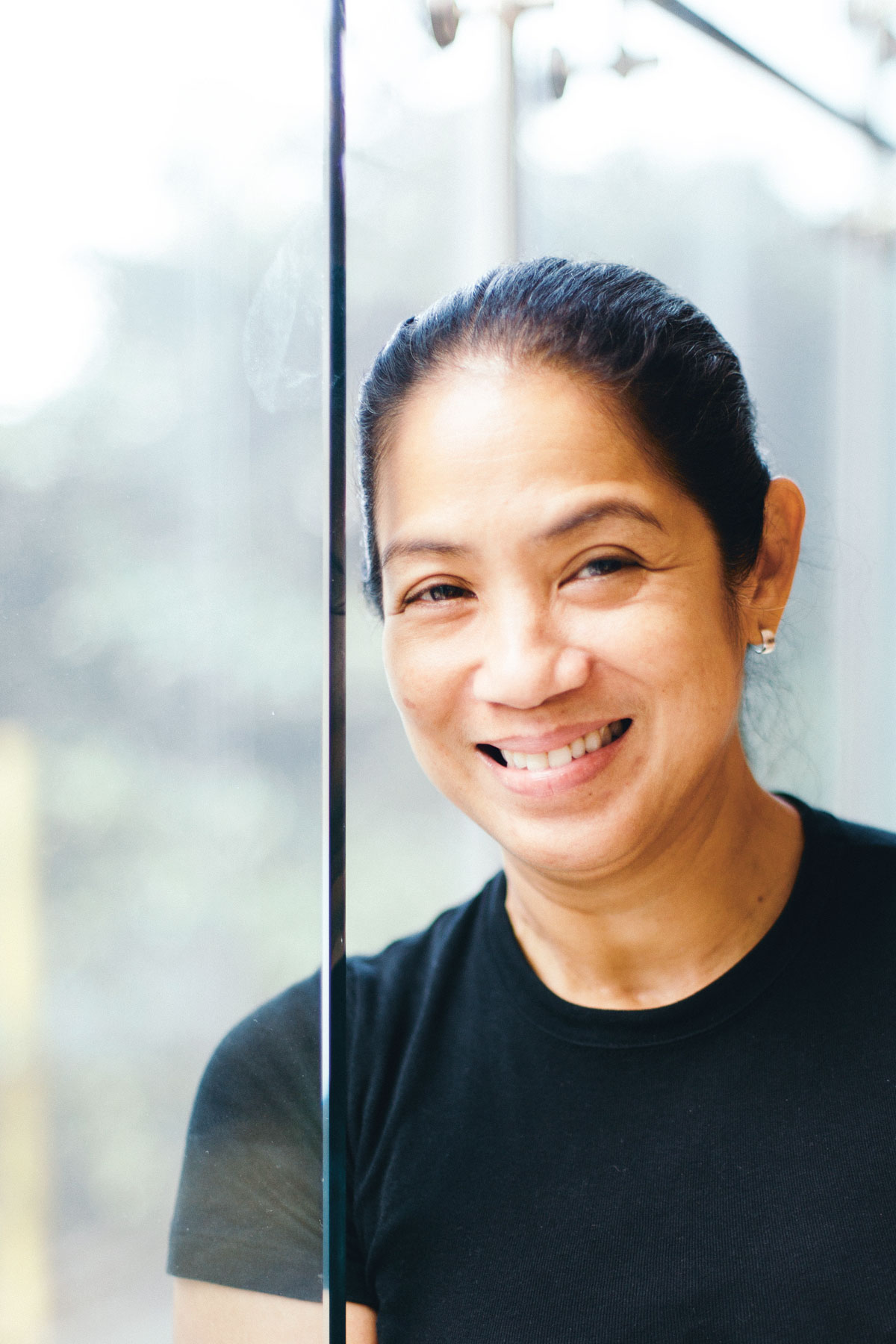
How many guests did you have to serve daily?
MS: Not very much, but it felt like a thousand.
FA: We were dealing with a lot of personalities. VPs, AVPs with their own quirks. It was about knowing a lot of initials, and knowing that one wanted gindara only, and one style only. You would make a perfectly good steak and one would douse it in Worcestershire sauce and hot sauce.
MS: They had quirks and somehow it felt like an extension of their home, except they expected much more, of course. They still wanted the comfort food that they were used to eating, but they expected more in the corporate dining setting.
“That’s the difference in corporate dining versus commercial restaurant operations. You could have one menu featured for the entire year and be known for those dishes, but in corporate dining you have to constantly change,” says Myrna Segismundo.
How creative did you have to be in a corporate dining kitchen?
MF: I guess that’s why Myrna invited me there. It’s because they always had to come up with something new. I had just finished doing food festivals at the Hyatt. You had to serve them from 9 a.m. to 7 p.m. every day, so you had to give them something to look forward to.
MS: Every time I got asked how work was, I would say that I would always pray to God that I wish He created more creatures. Because after a while you run out of dishes to cook. I used to call our suppliers and ask them for what I call “funny fish.” Meaning to say other than the tanigues and the lapu-lapus, and the usual fish.
MF: Something to entice them.
MS: You had to be constantly creating and you need a whole lot more variety. That’s the difference in corporate dining versus commercial restaurant operations. You could have one menu featured for the entire year and be known for those dishes, but in corporate dining you have to constantly change.
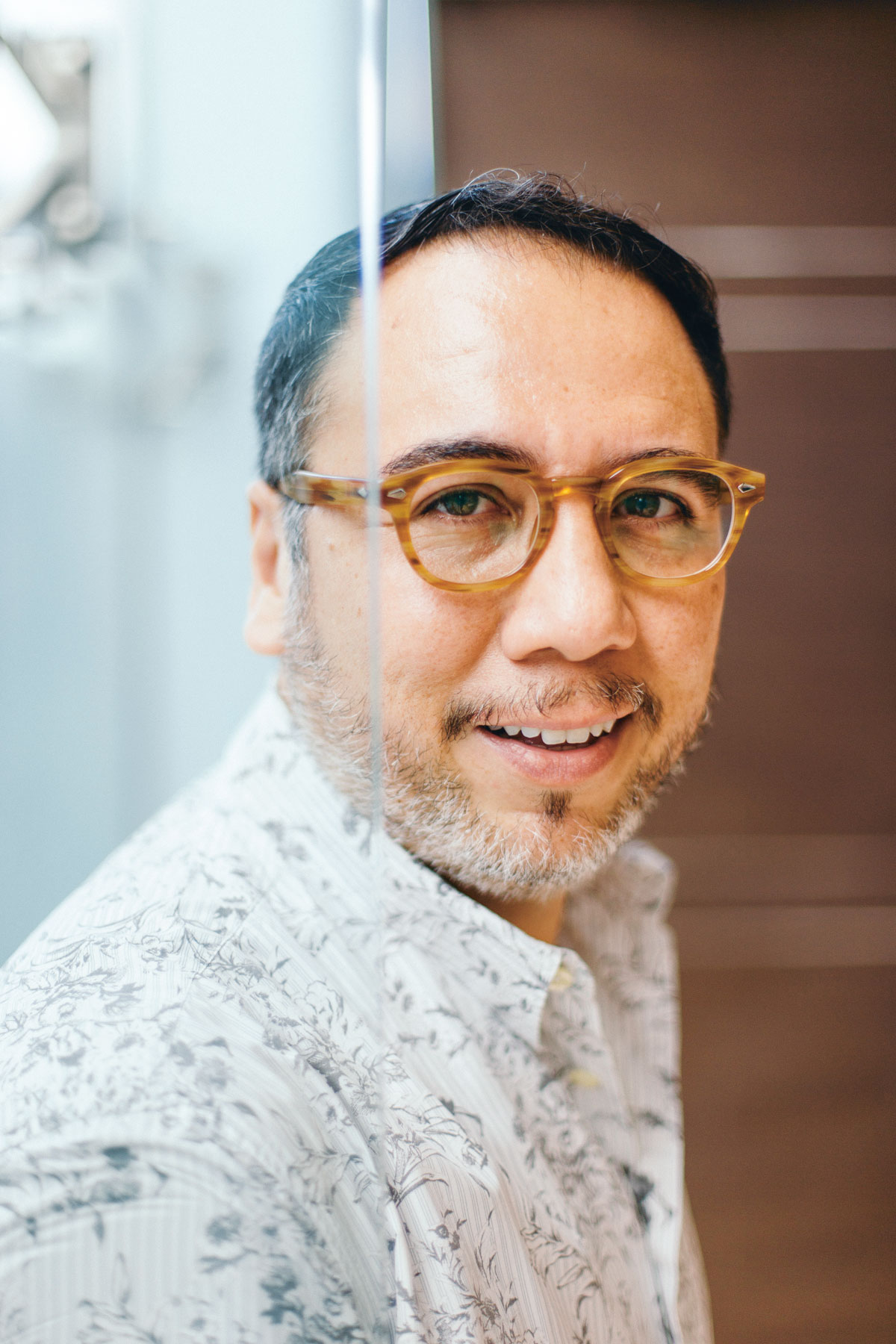
What enticed you to join Myrna at the Anvil?
MF: It was another opportunity to be in an institutional setting because I had absolutely no background in that. So my first experience was at the Hyatt Hotel and they were for short stints as well, only two or three weeks. This one was a little more contained with a smaller audience, but I guess what attracted me to it was the chance to learn in that environment. Also, the opportunity to create a menu. What was the first one? I think the first one was straight-out Italian?
FA: I wasn’t there yet, but I remember the third one was all-out Italian.
MS: Did we have a third one?
FA: Was it the second one?
MS: We didn’t have a third one, it just felt that way [laughs].
FA: Aside from the usual lunch, we also did catering for their meetings. The come-on for me was, I was going to work in a bank for five days and I would have the weekends off, so I could play tennis. If there weren’t any parties, we’d be gone by 5 p.m. Otherwise, in a different restaurant, I’d be minding the store until the customers were there.
Was it a collaborative working environment?
MS: Always. I really encouraged everyone to be creative, but I always hovered to make sure the structure was still there. I’m not naturally a structured person, but I had to force myself to enforce that because I didn’t have anyone else to rely on for that. One of my frustrations is really encouraging people to create.
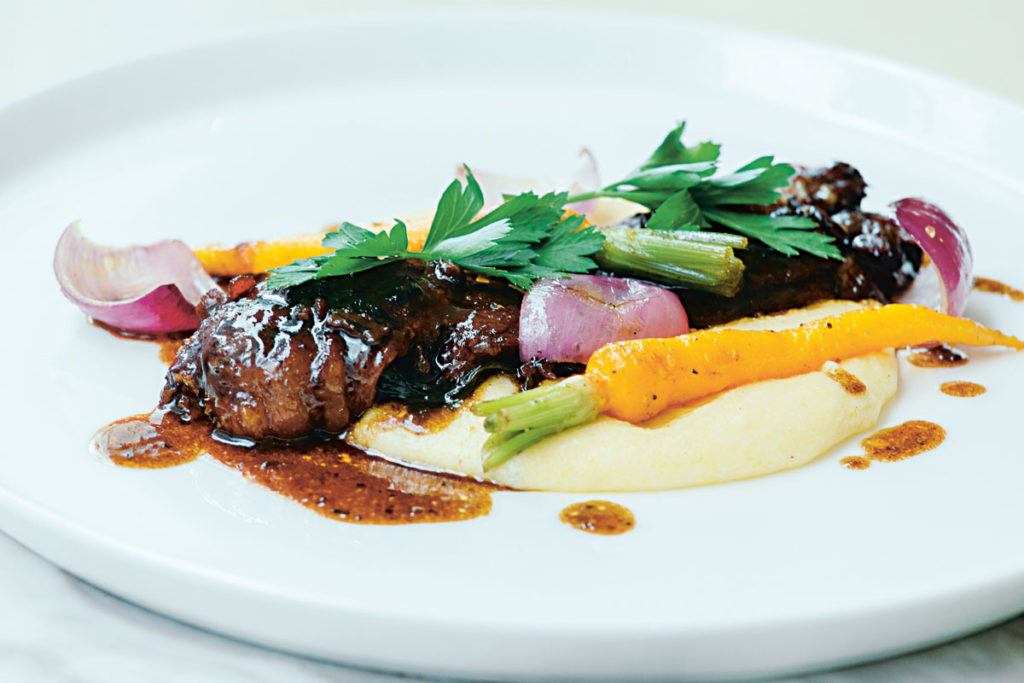
If the restaurant wasn’t open to the public, why did you feel the need to join competitions?
MS: I needed to validate that we were doing something good, to let the outside world validate that. I needed to know, without the guidance of the hoteliers whom I grew up with, to tell me that I was on the right track.
MF: It’s also an enticement because they’re bankers, right? Their way of entertaining their bigger clients was also to invite them to this restaurant, which was private dining.
MS: It was yabang factor.
MF: Whoever owns the dining facility uses it to single themselves out and put them on a different level than their peers.
MS: It’s really about being the showcase of the company. The Sign of the Anvil was the showcase of PCI Bank. The anvil was their logo. And how many corporate dining restaurants were there at the time? There was only Andres Soriano. I never even got to go in there. Prior to that was the Lighthouse of Meralco, which was also run by the Lopezes. The Anvil was patterned after the Lighthouse, and 9501 (the restaurant at ABS-CBN) was patterned after the Anvil.
What were your signature dishes at the Anvil?
MS: Turon. (laughs)
MF: Which she still does up to this day.
MS: I taught everybody but they couldn’t seem to learn it. It’s hard to have a signature dish because every month we changed the menu. I guess it’s also my personality that I don’t stick to anything too long.
FA: The puttanesca sauce, which was always on every menu, but it was different.
MS: I called it the black olive sauce because it wasn’t really a puttanesca, and I think that was quite unique to us.
FA: And the chicharon. Remember the big vat of pork rind? They cooked it fresh. And I know that they liked it a lot. The braised noodle with mushrooms, pork, and leeks. They loved that for merienda.
“I think the respect for Filipino food started when we started to be proud of it. It’s a real identity issue. It took a while to decide to come together and feel strongly about our own. Many things happened along the way, but it was also a necessary path,” says Margarita Forés.
How did this training influence the way that you run your kitchens now?
MF: The institutional part of it, I learned it from Myrna. It’s about the discipline and that’s the lesson that I still apply up until today. I learned that this business is not about the glamor that you get from being at the front of the house. It comes with responsibility, discipline, and structure, which I never had in the beginning, and I still don’t have that today sometimes, so I always have to go back and remind myself about what allows you to stay in this business.
MF: I had no idea even what the terms of the trade were. She taught me all about that. That’s why I say it’s providential that we did Madrid Fusion together (in Madrid, Spain in 2015). It makes us go full circle.
FA: Remember when we would do caterings? And Gaita was always late.
MF: That was the time when I was always late, and remember what I would say? Patience is a virtue [laughs].
FA: I was so amused by that. I would go back to the restaurant and say, “Grabe naman ’yung catering na ’yun!”
MS: That’s why I said, with creativity comes discipline!
Did she also influence you to promote Filipino cuisine the way you do now?
FA: I definitely got that from them. The Sign of the Anvil was not on the radar. We weren’t even open to the public yet every year, even prior to me joining, they were already competing in Chefs on Parade, and that was a premier competition.
MF: What I saw Myrna do was take heirloom recipes and translate that into the commercial setting. It was ahead of its time. We all had our different journeys, like when Fernando and I had neighboring restaurants in Greenbelt, and that’s when their Choc-Nut ice cream came out. I may have gotten there via Italy because it was there when I learned about simplicity and respecting the ingredients, but we all went back to our roots.
MS: I’m very happy with the landscape now. Of course there are different styles but that makes for an interesting landscape. I’m happy that people are now proud of Filipino food. There was a time when I asked myself if I could make a name for myself cooking Filipino food.

What do you think has contributed to the recent interest in Filipino food?
MF: I think the respect for Filipino cuisine started when we started to be proud of it. It’s a real identity issue. It took a while to decide to come together and feel strongly about our own. Many things happened along the way, but it was also a necessary path.
MS: The generation now is so different, and if we’re not careful, we will lose the adobos and the sinigangs. Part of my advocacy is to go to the grassroots level because that’s where it starts.
MF: Everyone is opening a pack of sinigang mix because it’s easy.
MS: And it’s not that there’s anything wrong with Filipino food, it’s just a matter of promoting it.
FA: We need to be less apologetic about our food.
Originally published in F&B Report Vol. 13 No. 3





